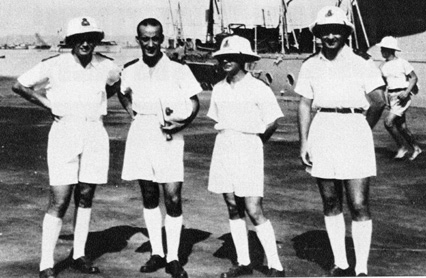
The 10th June 1940, the Italian fleet dislocated in East Africa had insufficient forces and supplies in order to undertake a war destined, contrarily toRome’s opinions, to last very long.
As it is known, the Italian Empire of East Africa or A.O.I. (1) was an immense territory that comprisedEritrea,Ethiopia andSomaliland. It was geographically isolated fromItaly and from the nearest Italian colony,Libya. The A.O.I. confined in fact with British and French colonies (Sudan,Kenya, French Somaliland andBritish Somaliland) and, a fact still more serious, its coastal line was too long and difficultly defensible from a fleet of surface units and submarines that, at the eve of the conflict, did not exceed the thirty units. Moreover, the vicinity of enemy airports (Port Sudan, Aden, Gibuti, Mombasa) allowed the United Kingdom to predispose, from the month of March of 1940 (when it was guessed a possible entry of Italy in the war as allied to Germany), a naval force apt not only to stop eventual Italian initiatives in the Red Sea and the Indian Ocean, but also menace the only large Italian base of all the A.O.I., Massaua. The deficiency of raw materials, fuel, spare parts, ammunitions, torpedoes and equipments and the impossibility to receive some aid from home Country, put the Italian Red Sea Fleet concentrated in Massaua in a condition of clear disadvantage.
Italian destroyers (Massawa, 1940).
The Italian Red Sea Fleet, on 11th June 1940, was composed by 5th DD Squadron formed by destroyers (former scouts) Tigre, Pantera and Leone (1,530 tons displacement); by 3rd DD Squadron formed by old destroyers C. Battisti, N. Sauro, D. Manin and F. Nullo (1060 tons); by colonial ship Eritrea (2,170 tons); by torpedo boats V.G. Orsini and G. Acerbi (670 tons); by gun boats G. Biglieri (620 tons) and Porto Corsini (290 tons); by minelayer Ostia (620 tons); by M.A.S. 204, 206, 210, 213 and 216 and by the armed ships (two modern banana boats) Ramb I and Ramb II. The Fleet was completed by the submarines Archimede, Galilei, Torricelli and Ferraris (880/1,230 tons), Galvani and Guglielmotti (896/1,265 tons) and Perla and Macallè (620/855 tons).
Italian raider ‘Ramb II’.
It is to notice that, apart the Red Sea Fleet, Italyhad not some worthy military ship for the defense of the Somalis coasts, but only some antediluvian minesweepers and some fish boats or sailboats armed with machine-guns. In the spring of 1940, the Navy High Command planned to send some units (above all large tonnage submarines) to Chisimaio (Somalis harbor), in order to lay a trap, in war case, to the merchant Anglo-French traffic in the Indian Ocean, but the lack of facilities of that small port (which, according to logic, would have had to be equipped in a suitable way already some years before) advised at the end against this movement. Let us return to Massaua. The main armament of Tigre class units (capable of a 31 knots speed) was of eight 120/45 mm. guns, two 76 mm. guns and six torpedo launch tubes, while the Sauro class units (35 knots speed) had four 102 mm. guns, two 40 mm. machine-guns and six torpedo launch tubes. Just before the beginning of the war and during it the weaponry of some ships of the Red Sea Fleet was modified and removed in order to reinforce the land batteries and in order to make war efficient the former banana boats Ramb I and Ramb II (they were equipped, it seems, with four 120 mm. guns and some 13.2 mm. machine-guns).Orsini class torpedo boats (30 knots speed) were instead equipped with four 102/45 mm. guns and four torpedo launch tubes, while the gun boats (9 knots speed) had two 76/40 mm. guns. Minelayer Ostia had two 102/45 mm. guns and a 76/40 mm. one. Eritrea could count on four 120/50 mm. guns, two40 mm. machine-guns and two13.2 mm. ones.
Italian destroyer ‘Pantera’ (Massawa, 1940).
In May, 1940, the Italian Submarines Flotilla based in Massaua was composed by eight units: Archimede, Galilei, Torricelli, Ferraris, Galvani, Guglielmotti, Perla and Macallè. Archimede, Guglielmotti, Galvani and Torricelli had a normal displacement of 1.016/1.266 tons and were armed with eight 533 millimeters torpedo launch tubes with a load of 14 torpedoes, a forward 100/43 mm. gun and two antiaircraft 13.2 twin systems. Galilei and Ferraris had instead a displacement of 985/1,259 tons and were armed with eight 533 mm. torpedo launch tubes with a load of 16 torpedoes, two antiaircraft 100/43 mm. guns and two single barrel 13.2 mm machine-guns. Perla had a normal displacement of 696/825 tons and was armed with six 533 millimeters torpedo launch tubes, a 100/47 mm. gun and two 13.2 machine-guns. Macallè had a displacement of 680/848 tons and was armed with six533 mm. torpedo launch tubes, with a load of 12 torpedoes, a 100/47 mm. gun and two 13.2 machine-guns.Then, the five old but fast M.A.S. (40 knots speed) based in Massaua were equipped with two torpedoes and two 6.5 machine-guns (or a single13.2 mm. one).
Colonial ship ‘Eritrea’ (1940).
Route of colonial ship ‘Eritrea’.
Submarines operations
In June, 11th, 1940, the first units of the Italian Red Sea Fleet to enter in action were the submarines: a debut unfortunately marked with some serious incidents of technical nature due to the methyl chloride smokes coming from the primordial refrigeration systems on board. The poisonings endured by the crew members of Perla and of Macallè carried, other than death and serious attacks of insanity from poisoning, to the strand of the first submarine and to the shipwreck of the second. Archimede had, for the methyl chloride spillage, to hasty re-enter to Massaua with about a dozen of dead sailors on board. In the same month, submarine Galilei, which was under way in the Red Sea, was spotted and attacked with depth charges by a pair of English submarine chaser units. Forced to reemerge, the Galilei was boarded by Moonstone corvette and captured with the entire crew. Unfortunately, the British sailors succeeded to lay their hands on the codes and on operative documents of the unit, communicating therefore to the bases of Port Sudan and Aden the exact position of the other Italian units. So, between the 22nd and the 23rd June, English destroyers and corvettes did not have difficulty to intercept Galvani and Torricelli. The crew of the last one, however, reserved to the enemy a fierce resistance. Forced to fast emersion in the Strait of Perim, the Italian submarine accepted the unfair gun engagement against three English destroyers (Kartoum, Kandahar and Kingstone) and one gunboat, Shoreham. Commander Pelosi and his men, behind the two 100 millimeters guns and the “twin” 13.2 mm machine gun, faced the enemy fire of 22 guns (120 and 102 millimeters) and of 25 machine-guns (20 and 37 millimeters), succeeding to seriously damage the Shoreham gunboat. In spite of the enemy cross fire, Pelosi maneuvered to collimate the destroyer Kartoum and he launched against it two torpedoes which centered the target sinking it. After nearly an hour of combat, the Italian unit was seriously hit and Pelosi, also if wounded, succeeded to save the crew and to self sink the unit. (2) After this engagement, the surviving Italian submarines had to deal with the lack of fuel and spare parts, so limiting their actions. The 13th August 1940, Ferraris submarine tried to intercept in the Red Sea the British battleship Royal Sovereign, coming from Suez, which however escaped the ambush and therefore went to Aden.
Italian submarine (1941).
Italian submarine (Massawa,1940).
The 6th September, Guglielmotti submarine, lain in wait for prey south of the Arabic islands Farisan, succeeded instead in torpedoing and sinking the oil tanker Atlas. Between the 20th and 21st October, Guglielmotti and Ferraris tried to intercept a large enemy convoy (31 steamboats escorted by cruiser Leander, destroyer Kimberley, 5 “sloops” and with an air escort made by 50 fighters and bombers based in Aden) coming from Indian Ocean and directed to Port Sudan and Suez.The two units did not succeed to intercept the convoy which was on the other hand spotted by the Italian destroyers Pantera, Leone and Nullo. In March 1941, when the fuel supplies were nearly exhausted and the English army, coming from Sudan, was nearly to overrun the defensive line of Cheren (in Eritrean territory), Supermarina (Italian Navy High Command) decided to retire in Europe (in the Atlantic base of Bordeaux) the last four submarines still based in Massaua: Gugliemotti, Ferraris, Archimede and Perla, trying a dangerous direct cruise, circumnavigating Africa, of more than 14,000 miles. The task was judged very risky by the German allies, but it succeeded perfectly. Between the 1st and the 3rd March, the four submarines (the first one was the smallest Perla) left Massaua and, one after the other, circumnavigating the African continent, went to the Italian base of Betasom (name of the Italian submarines base in Bordeaux). Guglielmotti was under way for 64 days and Perla (which was supplied of fuel in the waters of Madagascar by the German corsair cruiser Atlantis) was under way for eighty days.
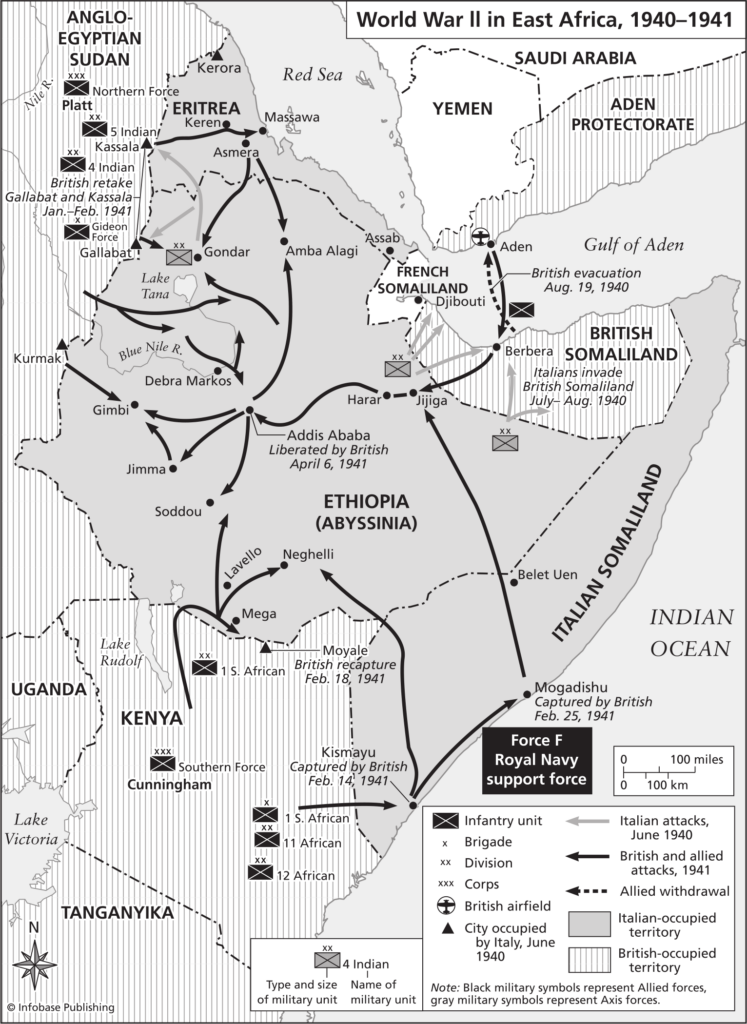
Map of Italian East Africa during 1940-1941.
Surface units actions in the Red Sea.
After to have carried out 15 missions, from the summer of 1940 to the February of 1941, during which the modest Italian craft succeeded to inflict some damage to the merchant and military English units, Supermarina, at the end of March, decided to employ the survivors destroyers of the Red Sea in a twofold and suicide operation against Port Sudan and Suez, ordering to the others long autonomy auxiliary units (the two Ramb and the colonial ship Eritrea) to try to reach Japan. To all the other cargo vessels was instead advised to try to reach the nearest French Madagscar neutral harbors (of 50 Italian and German steamboats blocked in Massaua from the beginning of the war only two succeeded to reach the Madagascar harbor Diego Suarez, while Himalaya motor-ship, making a record like a “Guinness” one, decided to cut through the Indian Ocean, going into the Pacific, doubling Horn Cape and miraculously reaching undamaged the harbor of Rio de Janeiro). Therefore two squadrons were formed, the first was composed by the heavy destroyers Leone, Pantera and Tigre, and the second one by the lighter Sauro, Manin and Battisti. The “Leone” class ones, in virtue of their greater autonomy would have had to attack Suez, distant not less than 50 hours under way, while the “Sauro” ones would have had to attack the nearer Port Sudan. The operation against Suez would have had to benefit from the cooperation of German air force, which from Crete would have had to simultaneously hit the same objective with at least one squadron of twin-engine bombers Heinkel 111. However, at the last moment, the Germans declared their impossibility to have part in the attack and the Italian Red Sea naval forces command had to change the plan. On March, the 31st, was therefore decided that both the two destroyers’ squadrons had to make a combined attack against Port Sudan, which was distant 300 miles. The entire navigation would have to be done by night and at full speed in order to avoid detection by the Royal Navy and by the RAF which, after Cheren’s fall and the destruction of nearly all Italian planes, dominated unchallenged all the skies of East Africa. Destroyer Leone, just outside Massaua harbor, hit with its prow the reef and it had to withdraw from the action. Then, after hardly two hours, the remaining five Italian destroyers were attacked by groups of English twin-engine bombers Bristol Blenheim. Also if the Italians were aware of the uselessness of the operation (the strong land and aerial defenses of Port Sudan were already alerted), with great courage and a bit of madness, they decided to continue all the same towards the objective. For the effort, the old engines of Battisti were very soon damaged and the ship was diverted to the Arabic coasts in order to be self-sunk by the crew. At the first lights of the dawn the four destroyers arrived to 30 miles from the objective but at that point a cloud of British bombers and fighters began to shoot at them with hailstorms of bullets and bombs from 110 to 224 kilograms. Going in zigzag between the high water columns and trying to answer to the continuous attacks with the fire of the few 13.2 machine-guns in equipment, the Italian units were very soon forced to break off the formation, skidding to the right and to the left.At about 7:30 a.m., English concentrated their fire on the weaker units Manin and Sauro which very soon were hit, while Pantera and Tigre, intercepted also by an enemy squadron of destroyers, headed east in order to reach the Arabic coast to self-sink. At 9 o’clock a.m., a 224 kg. bomb scored a direct hit on Sauro which in a few minutes sank with nearly all the crew, while the Manin, demonstrating an extraordinary defense and maneuver ability, succeeded to survive for others two hours, damaging with its 13.2 machine-guns a pair of English bombers. Then, hit by two224 kg. bombs, it was cracked in two and sunk.Some survivors were rescued by English ships some days after, in the sea infested by sharks which were attracted by the blood of many victims.
Italian submarines (Massawa, 1940).
Italian submarine ‘Perla’ (Red Sea, 1940).
The last operations
To the eve of the fall of Massaua (April, 1st, 1941), there were in harbor only two efficient units: the obsolete torpedo boat Orsini and MAS 213. The 8th April, MAS 213 commanded by Guardiamarina (4) Valenza obtained the more brilliant success of the whole campaign, attacking and torpedoing the 4,200 tons cruiser Capetown (armament: five 152 mm. guns; two 76 mm.; four 47 mm.; two 40 mm. machine-guns and nine 20 mm. ones; eight torpedo tubes). The English unit, very listed, was towed by some tugs to Bombay where it remained under repairs for a year. Also after the fall of Massaua, English had to suffer a last but important loss, this time due to Italian magnetic mines. The 13th June, just before the fall of Assab, the British auxiliary cruiser Parvati blew up having hit a mine at the entrance of this base. As said, the auxiliary units of the Italian Red Sea Fleet (Eritrea, Ramb I and Ramb II) succeeded to leave preventively the threatened Massaua already at the beginning of February, but among these only Eritrea and Ramb II reached the far Kobe at the end of March. Ramb I, in fact, was intercepted in February, 27th, south-west off Maldive islands by the English cruiser Leander whose gunfire sank it.
Italian MAS.
The vicissitude of the Italian Red Sea Fleet was so concluded. The fleet, with its activity, also if partly disabled by the lack of fuel, spare parts and ammunitions, succeeded without any doubt to create several problems to the British naval and air Forces engaged in the conquest of the East Africa and in the surveillance of the strategic routes along the Red Sea.
Italian light destroyer (Red Sea, 1940).
Derstroyer ‘Nullo’, sailors (1940).
Notes:
- “A.O.I.” in Italian is Africa Orientale Italiana = Oriental Italian Africa
- I found varied reports of this engagement. Some say Torricelli used torpedoes, others gunfire, others, like the British official report, say that the unit blew up for internal problems, unnoticed by the crew, which caused the torpedoes to explode some hours after the engagement.Mr. John Fluker, with whom I had a correspondence about this subject told me his point of view on this subject, shown here with his permission:The accounts I possess, which are the British Royal Navy reports cited in The Kelly’s: British J, K, and N Class Destroyers in World War II by Christopher Langtree, and Marc’AntonioBragadin’s The Italian Navy in World War II, agree that a force consisting of the destroyers KINGSTON, KANDAHAR, KHARTOUM, and the sloop SHOREHAM intercepted the TORRICELLI in the Red Sea on 22 June 1940. Bragadin’s history says the submarine was forced to travel on the surface due to damage, while the official British account says TORRICELLI briefly submerged. I do not find these versions incompatible; even if vital equipment was broken it was worth attempting to submerge when confronted by such an overwhelming force. Bragadin says the submarine fired all its torpedoes, which missed, and then fought on with her deck gun. The Kelley’s does not mention the submarine fighting back at all. As cited in The Kelley’s, the official British inquiry into the loss of KHARTOUM states that four hours after the TORRICELLI sank, there was a “purely accidental” explosion of the air flask of one of the destroyer’s torpedoes, causing a fire which shortly led to the explosion of the after magazine and the total loss of the ship. That a spontaneous explosion, completely unrelated to the action just ended, should occur in that way at that time is an event so improbable that it is very difficult to accept. My personal belief is that there was damage to the torpedo from shell fragments or a blind round which appeared so minor that the crew ofKHARTOUMoverlooked it; had a shell exploded aboard, they would have noticed. Further, after two explosions (first the torpedo and then the magazine, including some depth charges and torpedo warheads) with a fire in between, and then the wreck being located in distant Perim harbor, it is also difficult to believe that the investigation could truly determine that no damage had been inflicted by the TORRICELLI. I suspect that the committee conducting the inquiry simply refused to accept that the largest warship ever lost to the gunfire of a submarine by anybody was sunk by Italians, whom they had been taught to hold in contempt. While the sinking of a destroyer by the fire of a single 100mm gun is also an unlikely event regardless of the skill of the crew, it seems the least improbable way for events to have occurred.
- Lieutenant
- Acting Sub-Lieutenant
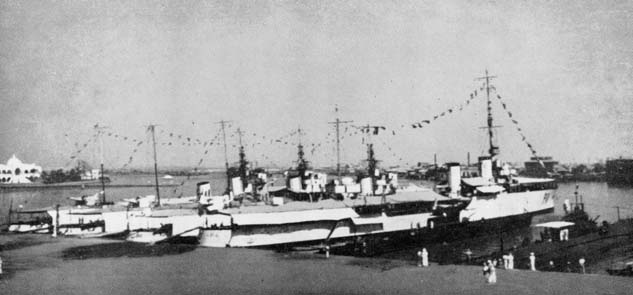

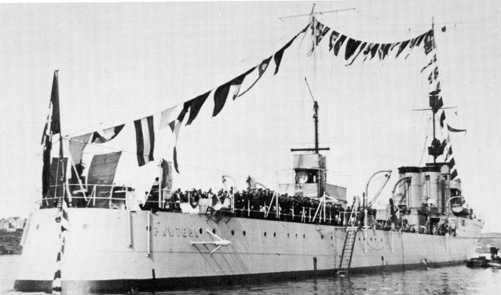

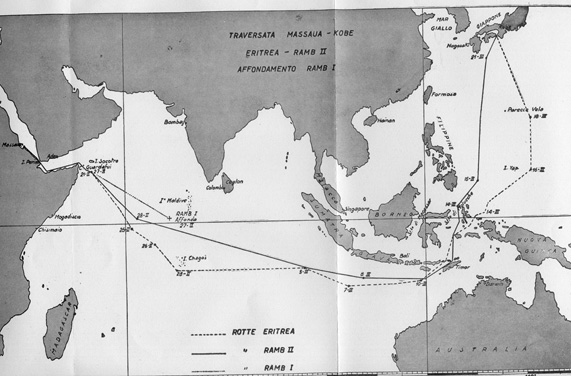
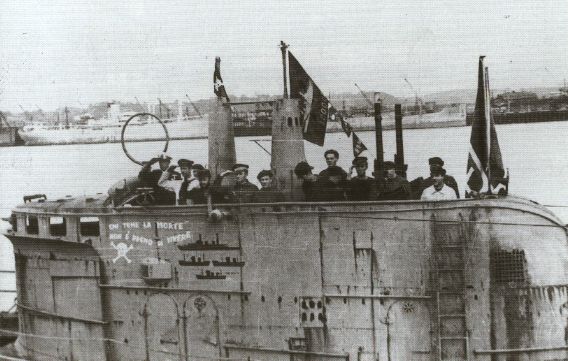
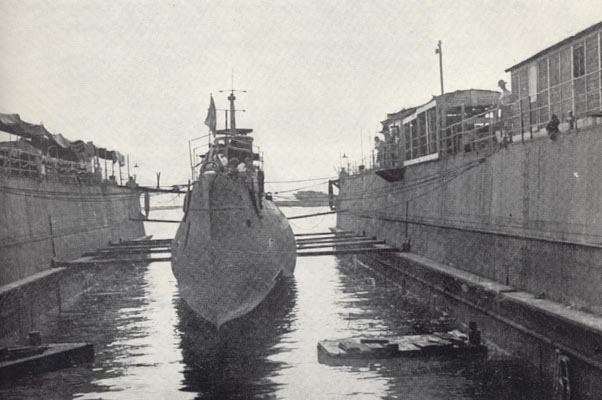
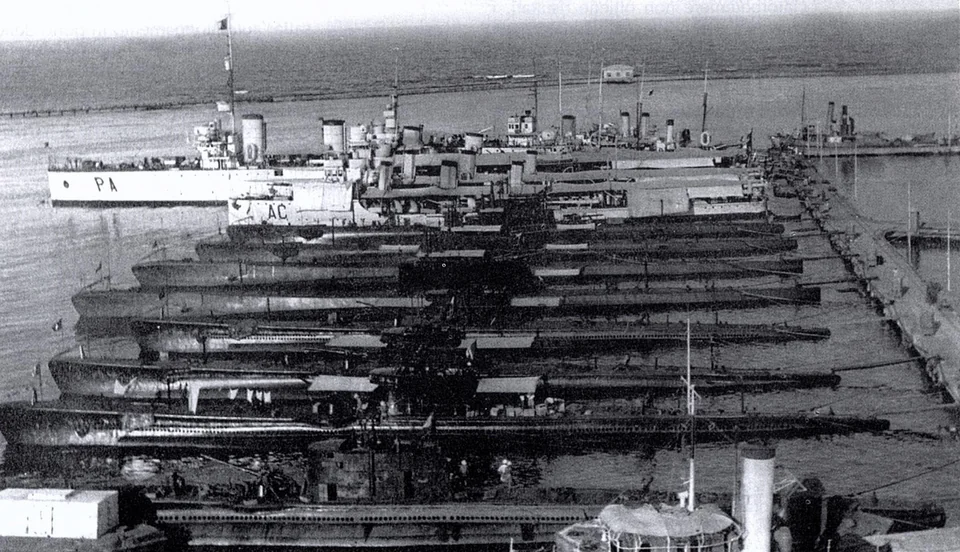

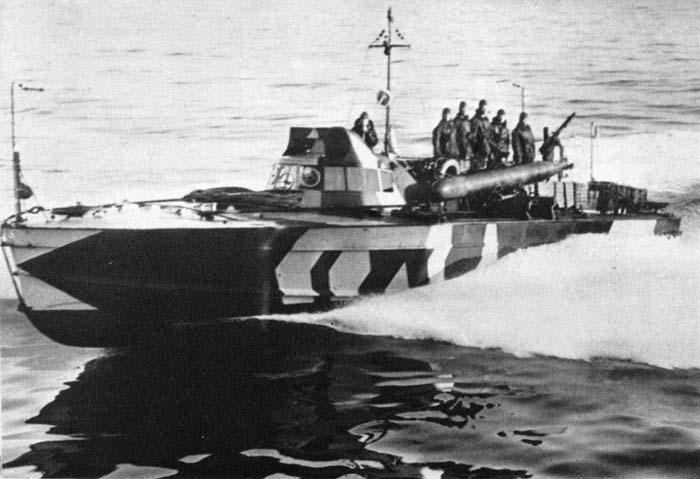
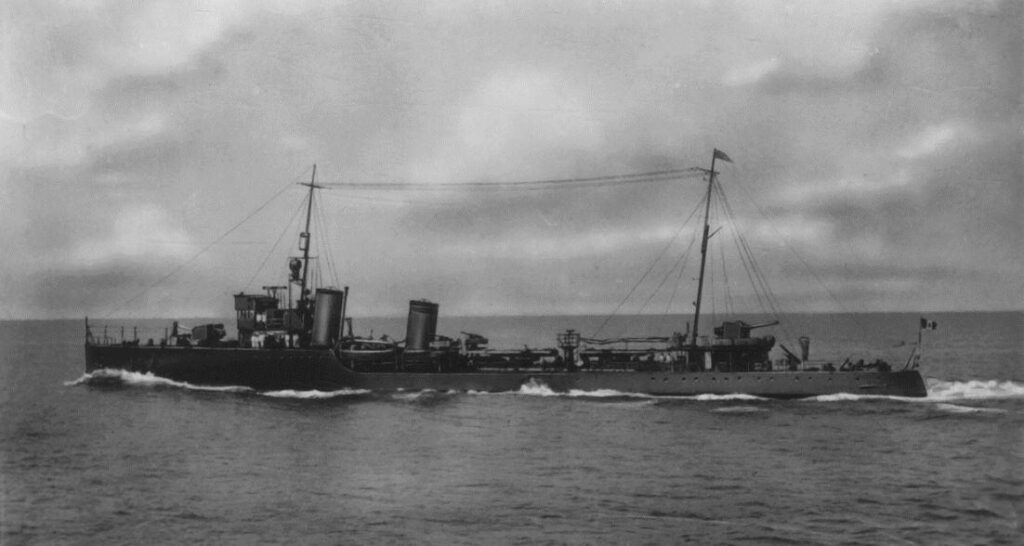
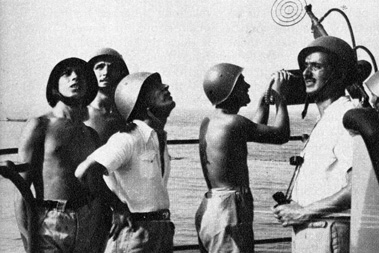
Lascia un commento
Devi essere connesso per inviare un commento.